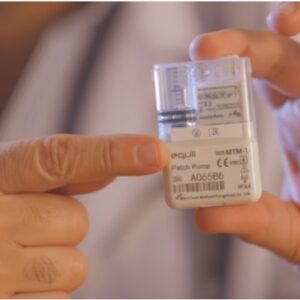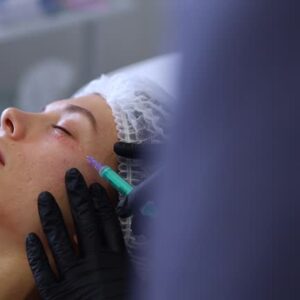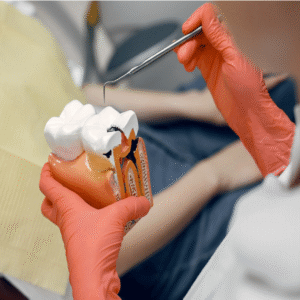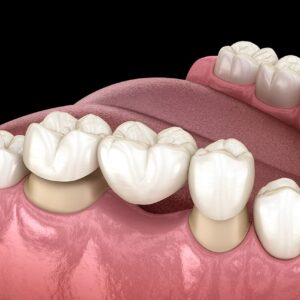Achieving a well-defined and sculpted jawline has become a popular aesthetic goal for many individuals seeking to enhance their facial harmony and confidence. One of the most sought-after non-surgical procedures to achieve this transformation is jawline filler treatment. When performed by trained and experienced professionals, Jawline Filler in Abu Dhabi offers remarkable results with minimal downtime. But how do experts ensure the procedure is applied safely? This comprehensive guide explores the key steps and considerations that professionals follow to administer jawline fillers effectively and securely.
Understanding Jawline Filler Treatment
What Is Jawline Filler?
Jawline filler is a cosmetic injectable designed to add volume, contour, and definition to the jawline and mandibular area. The procedure involves injecting hyaluronic acid-based fillers into specific points along the jawline to enhance its shape and symmetry. This minimally invasive treatment can address concerns such as a lack of definition, asymmetry, or a desire for a more sculpted appearance.
Why Opt for Professional Expertise?
Given the face’s complex anatomy, precise application is essential for natural-looking results. Professionals with specialized training understand facial anatomy intricacies, ensuring injections are strategically placed to avoid complications and achieve optimal aesthetic outcomes.
How Do Experts Apply Jawline Filler Safely?
1. Comprehensive Patient Consultation and Assessment
Key Points:
- Understanding Patient Goals: Professionals begin by discussing the patient’s aesthetic goals and expectations to tailor the treatment plan accordingly.
- Medical History Review: A thorough review of medical history helps identify any contraindications or allergies that might affect the procedure.
- Facial Analysis: An in-depth examination of facial proportions, symmetry, skin quality, and underlying structure guides precise filler placement.
- Customized Treatment Planning: Based on assessment findings, practitioners develop a personalized plan to achieve balanced and harmonious results.
Importance: This step ensures that the treatment aligns with the patient’s desires while prioritizing safety and suitability.
2. Choosing the Right Filler and Technique
Key Points:
- Selecting the Appropriate Filler: Experts select fillers with suitable viscosity and firmness to provide optimal contouring and longevity.
- Injection Technique: Different techniques, such as linear threading, serial puncture, or fanning, are employed depending on the area and desired effect.
- Injection Depth: Precise control over the depth of injection (superficial or deep) is crucial for natural results and safety.
- Use of Advanced Tools: Some practitioners utilize ultrasound or other imaging tools to visualize underlying structures before injection.
Importance: Proper selection and technique minimize the risk of irregularities or adverse effects, ensuring natural and safe results.
3. Maintaining Aseptic Technique
Key Points:
- Sterilization: All instruments and materials are sterilized thoroughly to prevent infections.
- Hand Hygiene: Practitioners adhere to strict hand hygiene protocols.
- Use of Gloves and Masks: Personal protective equipment reduces contamination risks.
- Preparation of the Treatment Area: The skin is cleansed with antiseptic solutions before injections.
Importance: Aseptic practices are fundamental to preventing infections and ensuring patient safety.
4. Precise Injection and Volume Control
Key Points:
- Incremental Injections: Experts inject small amounts gradually, assessing the effect after each step.
- Anatomical Awareness: Knowledge of critical structures such as blood vessels and nerves guides safe needle placement.
- Symmetry Checks: Continuous observation ensures balanced and symmetrical results.
- Avoiding Overcorrection: Professionals avoid injecting excessive filler to prevent unnatural appearances or complications.
Importance: Controlled and precise injections prevent complications and optimize aesthetic outcomes.
5. Post-Treatment Care and Follow-up
Key Points:
- Immediate Aftercare: Patients are advised to avoid touching or massaging the treated area for a specified period.
- Managing Common Side Effects: Mild swelling, bruising, or tenderness may occur but typically resolve quickly.
- Follow-up Appointments: Scheduled visits allow practitioners to assess results and perform any necessary touch-ups.
- Patient Education: Clear instructions on activity restrictions, signs of complications, and when to seek medical attention are provided.
Importance: Proper aftercare enhances safety, reduces risks, and maintains the longevity of results.
Additional Safety Measures Taken by Experts
Use of High-Quality, Approved Fillers
Professionals only use fillers approved by relevant health authorities, ensuring safety and effectiveness. These products undergo rigorous testing and quality assurance.
Continuous Training and Certification
Practitioners stay updated with the latest techniques and safety protocols through ongoing education. Certifications and specialized training in facial anatomy and injectables are essential.
Emergency Preparedness
Clinicians are equipped to handle any adverse reactions promptly, including having resuscitation equipment and medications on hand.
Why Choose a Qualified Professional for Jawline Filler?
Choosing a qualified and experienced specialist is paramount for safe and successful Jawline Filler in Abu Dhabi. Expert practitioners possess in-depth knowledge of facial anatomy, injection techniques, and safety protocols, minimizing the risk of complications and ensuring natural-looking results. Additionally, they tailor treatments to individual facial structures, which is vital for achieving harmonious and lasting outcomes.
FAQs About Jawline Filler
1. How long does a jawline filler procedure typically take?
The procedure usually lasts between 30 to 60 minutes, depending on the extent of correction and the specific technique used.
2. How long do the results of jawline filler last?
Results can vary based on the type of filler used and individual factors, but typically, they last between 9 to 18 months with proper care.
3. Is the procedure painful?
Most patients experience minimal discomfort due to the use of fine needles and topical anesthesia. Any discomfort is usually transient and manageable.
4. Can jawline filler be combined with other treatments?
Yes, jawline filler can be safely combined with other facial rejuvenation procedures such as Botox, cheek fillers, or skin resurfacing treatments for a comprehensive aesthetic enhancement.
Conclusion
Achieving a defined and sculpted jawline through Jawline Filler Abu Dhabi is a safe and effective process when performed by qualified professionals. Experts follow a meticulous approach that includes thorough assessment, precise technique, strict aseptic measures, and attentive aftercare. Prioritizing safety and natural results, these practitioners help patients enhance their facial harmony with confidence. If you are considering jawline enhancement, ensure you consult with experienced specialists who adhere to the highest safety standards for the best possible outcome.






